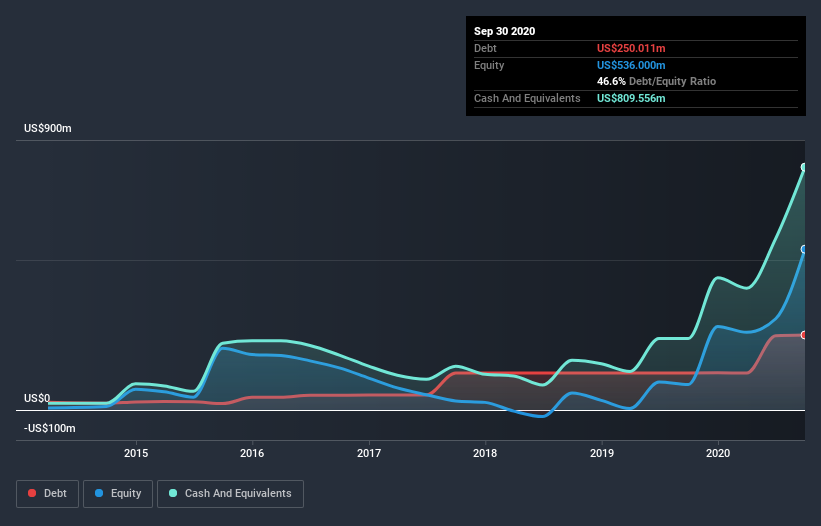Is Natera (NASDAQ:NTRA) Using Too Much Debt?
Warren Buffett famously said, 'Volatility is far from synonymous with risk.' When we think about how risky a company is, we always like to look at its use of debt, since debt overload can lead to ruin. We note that Natera, Inc. (NASDAQ:NTRA) does have debt on its balance sheet. But the more important question is: how much risk is that debt creating?
When Is Debt Dangerous?
Debt and other liabilities become risky for a business when it cannot easily fulfill those obligations, either with free cash flow or by raising capital at an attractive price. In the worst case scenario, a company can go bankrupt if it cannot pay its creditors. However, a more common (but still painful) scenario is that it has to raise new equity capital at a low price, thus permanently diluting shareholders. Of course, the upside of debt is that it often represents cheap capital, especially when it replaces dilution in a company with the ability to reinvest at high rates of return. The first thing to do when considering how much debt a business uses is to look at its cash and debt together.
View our latest analysis for Natera
What Is Natera's Debt?
As you can see below, at the end of September 2020, Natera had US$250.0m of debt, up from US$123.7m a year ago. Click the image for more detail. However, it does have US$809.6m in cash offsetting this, leading to net cash of US$559.5m.
How Healthy Is Natera's Balance Sheet?
We can see from the most recent balance sheet that Natera had liabilities of US$195.9m falling due within a year, and liabilities of US$244.8m due beyond that. On the other hand, it had cash of US$809.6m and US$70.7m worth of receivables due within a year. So it actually has US$439.5m more liquid assets than total liabilities.
This short term liquidity is a sign that Natera could probably pay off its debt with ease, as its balance sheet is far from stretched. Simply put, the fact that Natera has more cash than debt is arguably a good indication that it can manage its debt safely. The balance sheet is clearly the area to focus on when you are analysing debt. But ultimately the future profitability of the business will decide if Natera can strengthen its balance sheet over time. So if you want to see what the professionals think, you might find this free report on analyst profit forecasts to be interesting.
Over 12 months, Natera reported revenue of US$362m, which is a gain of 26%, although it did not report any earnings before interest and tax. With any luck the company will be able to grow its way to profitability.
So How Risky Is Natera?
We have no doubt that loss making companies are, in general, riskier than profitable ones. And the fact is that over the last twelve months Natera lost money at the earnings before interest and tax (EBIT) line. Indeed, in that time it burnt through US$139m of cash and made a loss of US$189m. But the saving grace is the US$559.5m on the balance sheet. That kitty means the company can keep spending for growth for at least two years, at current rates. Natera's revenue growth shone bright over the last year, so it may well be in a position to turn a profit in due course. By investing before those profits, shareholders take on more risk in the hope of bigger rewards. When analysing debt levels, the balance sheet is the obvious place to start. However, not all investment risk resides within the balance sheet - far from it. Be aware that Natera is showing 3 warning signs in our investment analysis , you should know about...
If, after all that, you're more interested in a fast growing company with a rock-solid balance sheet, then check out our list of net cash growth stocks without delay.
This article by Simply Wall St is general in nature. It does not constitute a recommendation to buy or sell any stock, and does not take account of your objectives, or your financial situation. We aim to bring you long-term focused analysis driven by fundamental data. Note that our analysis may not factor in the latest price-sensitive company announcements or qualitative material. Simply Wall St has no position in any stocks mentioned.
Have feedback on this article? Concerned about the content? Get in touch with us directly. Alternatively, email editorial-team (at) simplywallst.com.

 Yahoo Finance
Yahoo Finance 
